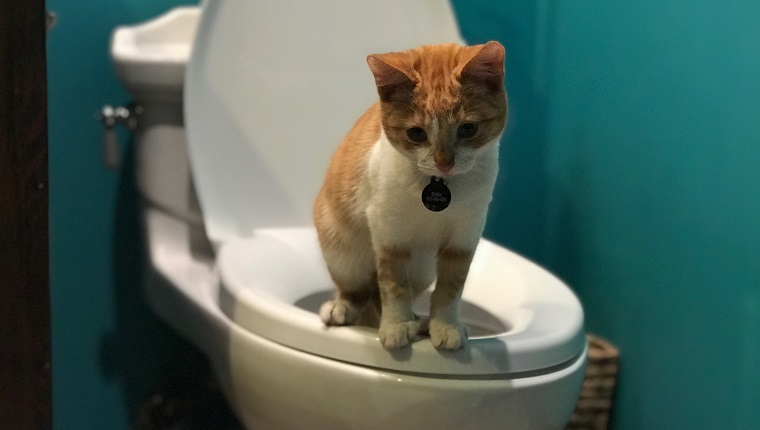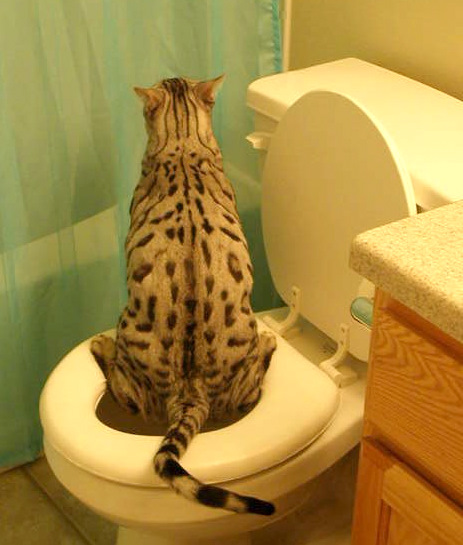What Flushing Animal Waste Can be Not Advisable
What Flushing Animal Waste Can be Not Advisable
Blog Article
Listed here underneath you'll find lots of outstanding information and facts in relation to Can You Flush Dog and Cat Poo Down the Toilet?.

When it pertains to throwing away waste, specifically animal waste, many individuals usually turn to the hassle-free option of flushing it down the commode. Nevertheless, this relatively very easy solution can have serious consequences for the atmosphere and public health. In this post, we'll discover why flushing pet waste down the commode is a negative concept and provide different approaches for appropriate disposal.
Intro
Appropriate waste disposal is crucial for maintaining ecological sustainability and public health. While it might appear harmless to purge animal waste down the toilet, it can lead to numerous concerns, both for the atmosphere and human well-being.
Risks of flushing animal waste
Ecological impact
Purging animal waste presents damaging bacteria and microorganisms right into waterways, which can adversely influence aquatic ecological communities. These pathogens can pollute water resources and injury aquatic life, interrupting fragile ecological communities.
Public health concerns
Pet waste has harmful bacteria such as E. coli and Salmonella, which can posture significant wellness threats to people. Flushing pet waste down the bathroom can infect water products, leading to the spread of diseases and infections.
Alternatives to flushing
Instead of flushing pet waste down the commode, there are numerous alternate disposal techniques that are much more environmentally friendly and hygienic.
Composting
Composting pet waste is a green method to take care of it. By composting, raw material is broken down into nutrient-rich soil, which can be made use of to fertilize yards and plants.
Garbage dump disposal
Getting rid of animal waste in a land fill is another choice. While not as environmentally friendly as composting, it is a safer option to flushing, as it prevents the contamination of water sources.
Pet dog waste disposal systems
There are specific pet waste disposal systems available that securely and hygienically get rid of animal waste. These systems typically make use of enzymes to break down waste and remove odors.
Steps to proper animal garbage disposal
To make certain correct disposal of pet waste, follow these steps:
Scooping and nabbing waste
Consistently scoop and here bag pet waste using biodegradable bags. This avoids waste from contaminating the environment.
Using designated waste containers
Dispose of bagged pet waste in marked waste containers, such as garden compost bins or garbage dump bins. Stay clear of flushing it down the commode in all expenses.
Cleaning litter boxes and pet dog locations frequently
Routinely tidy litter boxes and pet locations to avoid the build-up of waste and germs. Use pet-safe cleansing products to keep hygiene.
Advantages of appropriate disposal approaches
Taking on correct disposal methods for pet waste offers a number of benefits:
Minimized environmental pollution
Proper disposal methods minimize the risk of environmental pollution, protecting rivers and ecosystems from contamination
Decreased danger of water contamination.
By avoiding flushing pet waste down the commode, the threat of water contamination is considerably lowered, safeguarding public health.
Improved sanitation and hygiene
Appropriate disposal approaches advertise much better hygiene and health, developing a more secure setting for both people and animals.
Final thought
In conclusion, flushing pet waste down the commode is unsafe to the environment and public health. By taking on different disposal techniques and following correct waste administration practices, we can decrease the unfavorable impact of pet waste and contribute to a cleaner, healthier world.
What To Do With Dog Poo – The Do's And Don'ts Of Disposing Of Faeces
Dog poo bins
Some councils provide dedicated dog waste bins in popular dog-walking areas that can take dog poo that has been bagged but you can legally dispose of dog waste in any public litter bin, as long as it is securely bagged. This also applies to your wheelie bin at home.
Do not flush
Water companies do not recommend flushing dog faeces down the toilet because certain parasites can survive the water processing treatment and are potentially harmful to humans. You should also never consider flushing dog poo that has been bagged down the toilet as the bags will not break down and instead create severe blockages in the sewage system.
In the woods
The Forestry Commission promotes a ‘stick and flick’ method for dealing with waste in the woods. This means finding a stick and using it to flick any poo from off the path so that it is out of the way of other walkers. You could also bury it as long as it is not in an area where there might be livestock.
Livestock
Parasites found in dog poo can be transmitted to livestock if they inadvertently eat infected faeces that has been left on grazing land. This could result in the death of sheep or abortion in cattle so you should always make sure you pick up your dog’s waste in fields where livestock could be present.

Routinely tidy litter boxes and pet locations to avoid the build-up of waste and germs. Use pet-safe cleansing products to keep hygiene.
Advantages of appropriate disposal approaches
Taking on correct disposal methods for pet waste offers a number of benefits:
Minimized environmental pollution
Proper disposal methods minimize the risk of environmental pollution, protecting rivers and ecosystems from contamination
Decreased danger of water contamination.
By avoiding flushing pet waste down the commode, the threat of water contamination is considerably lowered, safeguarding public health.
Improved sanitation and hygiene
Appropriate disposal approaches advertise much better hygiene and health, developing a more secure setting for both people and animals.
Final thought
In conclusion, flushing pet waste down the commode is unsafe to the environment and public health. By taking on different disposal techniques and following correct waste administration practices, we can decrease the unfavorable impact of pet waste and contribute to a cleaner, healthier world.
What To Do With Dog Poo – The Do's And Don'ts Of Disposing Of Faeces
Dog poo bins
Some councils provide dedicated dog waste bins in popular dog-walking areas that can take dog poo that has been bagged but you can legally dispose of dog waste in any public litter bin, as long as it is securely bagged. This also applies to your wheelie bin at home.
Do not flush
Water companies do not recommend flushing dog faeces down the toilet because certain parasites can survive the water processing treatment and are potentially harmful to humans. You should also never consider flushing dog poo that has been bagged down the toilet as the bags will not break down and instead create severe blockages in the sewage system.
In the woods
The Forestry Commission promotes a ‘stick and flick’ method for dealing with waste in the woods. This means finding a stick and using it to flick any poo from off the path so that it is out of the way of other walkers. You could also bury it as long as it is not in an area where there might be livestock.
Livestock
Parasites found in dog poo can be transmitted to livestock if they inadvertently eat infected faeces that has been left on grazing land. This could result in the death of sheep or abortion in cattle so you should always make sure you pick up your dog’s waste in fields where livestock could be present.

I am just very inquisitive about Should you flush animal waste down the toilet and I'm hoping you liked the blog posting. Appreciated our review? Please quickly share it. Let somebody else discover it. We thank you for reading our article about Don't Flush Your Pets Poo Down The Loo, Vet Warns.
Schedule Service Report this page